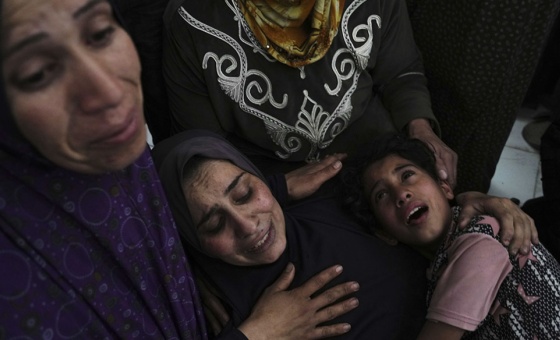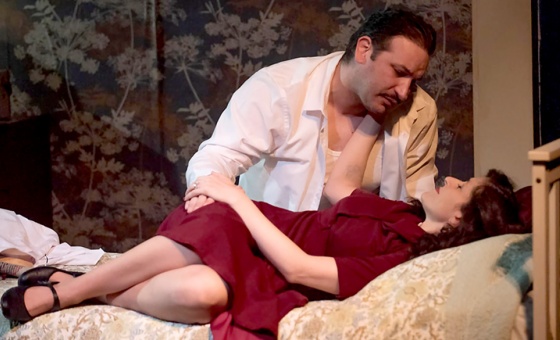This is the last article you can read this month
You can read more article this month
You can read more articles this month
Sorry your limit is up for this month
Reset on:
Please help support the Morning Star by subscribing here
THE Llŷn Peninsula in Gwynedd is regarded as one of the heartlands of the Welsh language and its culture, and this year it is home to the National Eisteddfod of Wales.
However, despite its idyllic landscapes, it is a time of crisis for the communities which comprise this linguistic stronghold.
Plaid Cymru MP for Arfon, in the county, Hywel Williams has commissioned a report by the Bevan Foundation think tank, which has pointed to low wages and insecure work as in large part responsible, with high housing, energy and travel costs meaning that local families face an increased cost-of-living premium.
But the celebration of Welsh identities goes ahead against this background of economic and cultural crisis. And these questions — and others to boot — are all represented in the art, music and politics of the Eisteddfod field.
The “archdderwydd,” (archdruid) Myrddin ap Dafydd controversially stepped into the political arena by backing the call by First Minister Mark Drakeford for the transfer of the crown estate in Wales to the hands of the Welsh government.
Ap Dafydd stated that such monies could be used to address, among other things, the economic and social issues facing Welsh language communities.
Sunday saw a CND march from Trawsfynydd, site of a former nuclear power station, arrive at the Eisteddfod field at Boduan.
It was August 6, Hiroshima Day, which is annually commemorated in Eisteddfod week. The aim was to voice opposition to nuclear power currently being touted as a quick solution to the world's energy and climate change crises. But which CND sees also as directly linked to nuclear arms production.
CND was also out in force at an event at the National Library of Wales stand remembering the 100th anniversary of the Appeal of Welsh Women to the United States.
In 1923, still in the shadow of the first world war, almost 400,000 Welsh women signed a petition calling on the US to join the League of Nations.
The petition, discovered in a chest in the Smithsonian Institute has been lent to Wales’s National Library so that this incredible plea for peace from the Women of Wales “For A World Without War” can be further researched and given access to.
Women again were in the forefront of Welsh politics just across the way, at Cymdeithas yr Iaith Gymraeg (the Welsh Language Society) as the group launched a book entitled Merched Peryglus (Dangerous Women).
In this volume the role of women in the struggles for linguistic rights in Wales were celebrated. They were, and are, in the front line of this movement’s non-violent direct-action campaigns, frequently appearing in courts and serving time in prisons as well as leading the organisation over the decades.
In Syched (Thirst), the beer tent, while slaking his thirst on the local brew from independant brewery Cwrw Llyn, your reporter was interupted by Yes Cymru — the pro-independence movement — kindly proffering a beer mat. On it the information that Wales has 11 per cent of England/Wales railtrack but receives only 1 per cent of spending on England/Wales rail improvements, together with the message that Westminster Isn’t Working. No escape from politics here. As if we’d want to!
And indeed the poetry competition, in freer verse, for the Eisteddfod crown, was won by relatively local-boy Rhys Iorwerth from Caernarfon for poems which examine the fears of a father as he contemplates his family facing the twin apocalypse of environmental and nuclear disaster. His collection was deemed by the judges as outstanding and possessing a mature poetic voice.
At Y Lle Celf (The Arts’ Place) there’s always plenty of issues on display among the exhibits. The work of acclaimed artist Ifor Davies, also addressed the questions of war and peace. Yr Ysgrifen Ar Y Mur (Writing on the Wall) took a biblical take on the subject with the image of a dismantled shotgun separating a divided bible. Its message: “Gorau Arf, Arf Dysg” (Education, the Best Weapon).
Ruth Jen’s piece Mudo/Migration was an exciting creation of 600 clay creatures in an almost never-ending row. Here was a caravan of individuals yet whom belong to wider tribes or families.
Jen is famous for her prints of traditional “Welsh ladies,” often kicking against the traces, so pottery is not her normal medium. But her bird-like figurines manage to shock, confuse and appeal to the viewers’ sensibilities.
Aur Du/Black Gold is a ceramic creation by Kim Colebrook of black onyx porcelain and gold leaf, seeking to describe a material that has multiple characteristics.
The piece speaks of a shared yet now lost knowledge, coalminers’ ability to read and follow these geological veins across the breadth of the coalfield.
And indeed, next year’s Eisteddfod has just been announced as Pontypridd, a town in the former south Wales coal belt, and a far cry from rural Llŷn.









